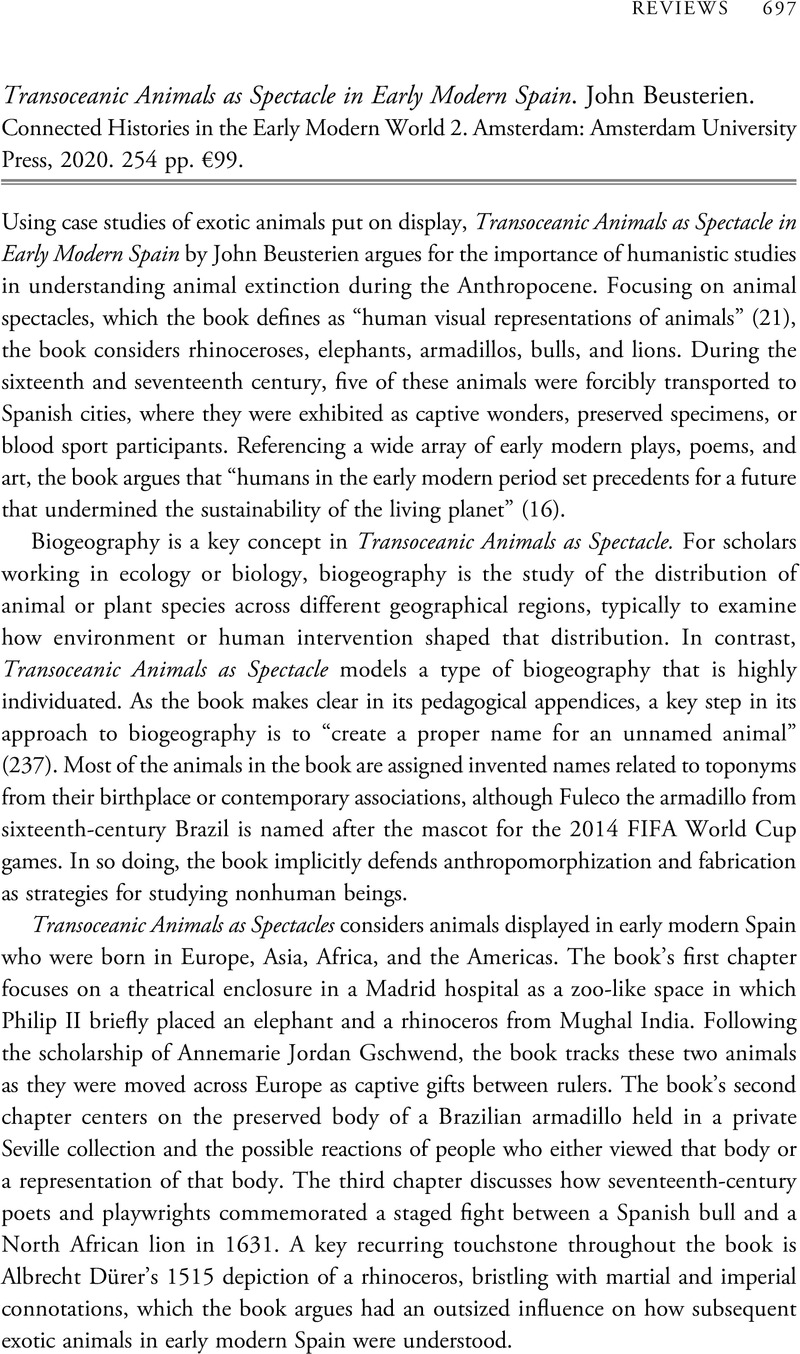No CrossRef data available.
Article contents
Transoceanic Animals as Spectacle in Early Modern Spain. John Beusterien. Connected Histories in the Early Modern World 2. Amsterdam: Amsterdam University Press, 2020. 254 pp. €99.
Review products
Transoceanic Animals as Spectacle in Early Modern Spain. John Beusterien. Connected Histories in the Early Modern World 2. Amsterdam: Amsterdam University Press, 2020. 254 pp. €99.
Published online by Cambridge University Press: 25 July 2023
Abstract
An abstract is not available for this content so a preview has been provided. Please use the Get access link above for information on how to access this content.

- Type
- Review
- Information
- Copyright
- Copyright © The Author(s), 2023. Published by the Renaissance Society of America



